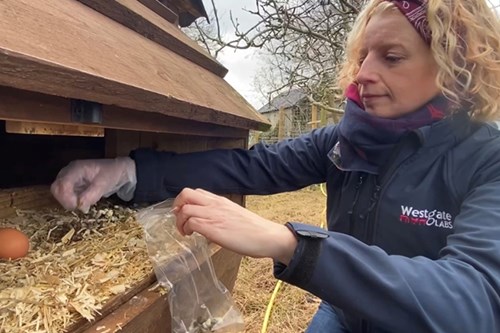Parasite Control Programmes for Birds
- Home
- Info Zone
- Parasite Control for Poultry
- Parasite Control Programmes for Birds
Parasitic infections, including worm infestations, are becoming more prevalent in backyard flocks. Poultry worms and protozoa such as cocci are now one of the most common diagnoses to consider with unthrifty birds. Back yard poultry are particularly at risk of parasite infection and, as there are only two wormers licensed to treat internal parasites in poultry, it's imperative that we take steps to protect our birds and the chemicals to treat them. The best way to do this is by using evidence based control; regular worm egg counts that detect adult, egg laying parasites in the bird. Testing first to identify parasite type also helps to target treatment and management appropriately.

Using A Worm Egg Count
A single worm egg count is a useful snapshot, but it's a series across the year that gives a clearer picture about the health of your bird and can inform your management. Conduct worm egg counts routinely every 12 weeks to monitor levels of egg shedding and on an adhoc basis for any birds you might be concerned about. This is because parasite lifecycles are short - from as little as two - four weeks and so a problem can quickly get out of hand, especially in vulnerable birds.
We’re not trying to eradicate parasites – this is impossible and will only serve to speed up the development of resistance – rather to manage them at an acceptable level before they cause a physical health issue.
> What do my results mean?
When can a worm count be useful?
- Use a regular programme of worm egg counts every 12 weeks
- Worm egg count an individual you are concerned about
- Test late in the year during or after the moult, to ensure birds are going into the winter worm free.
- In addition, quarantine and worm egg count any newly acquired stock so you know what they might be bringing into the coop.
Added benefits of worm egg counts
- Prevents putting unnecessary chemicals into animals that might eventually end up in the food chain through their meat or eggs.
- Using fewer chemicals is better for the environment.
- Birds on medicated feed should be restricted to eat only that food for seven days to get correct dosage. This means restricting free range birds and taking away 'treats' and additional food.
Good Husbandry
Will also help to break the lifecycle of any parasites mechanically, reducing your reliance on chemicals.
Breaking the lifecycle mechanically
Disinfectant in and around the hen house helps to kill eggs in the environment. Also ensure the coop is well ventilated and keep the bedding as dry as possible to reduce intermediate hosts that can spread parasites.
Worm eggs and larvae dry out quickly during dry weather and they are also destroyed by UV light from sunlight so keep grass short and rotate pasture to help reduce the build-up of worms.
